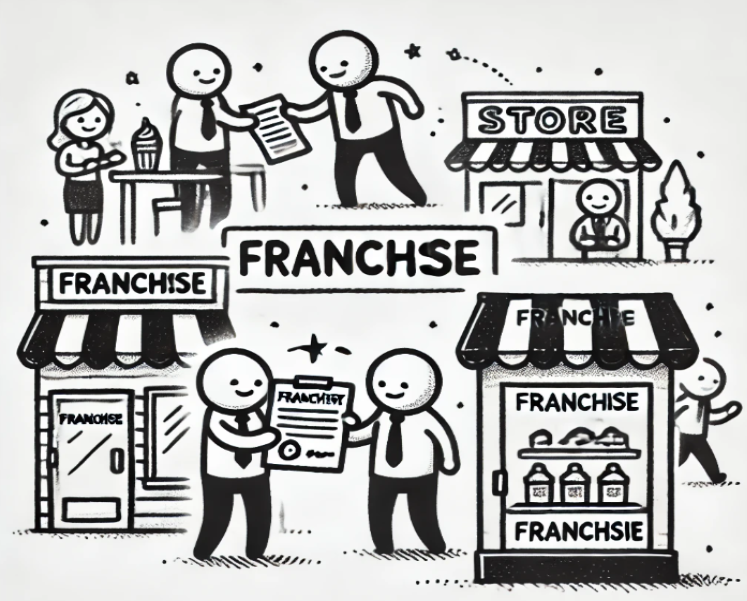Businesses That Run Themselves: A Comprehensive Guide to Passive Income Success
In the world of entrepreneurship, the idea of businesses that run themselves is highly appealing. These ventures require minimal daily involvement, allowing owners to generate income while focusing on other opportunities or enjoying financial freedom. With automation, smart planning, and the right tools like Shineranker and simple AI tools, certain business models can operate with little hands-on management.
While no business is completely passive, the key is to set up systems and automation that keep things running efficiently. Whether you're exploring e-commerce, digital products, or AI video tools, this guide will walk you through some of the best self-sustaining businesses and how to make them work for you.
Businesses That Run Themselves
1. E-commerce with Dropshipping
What It Is: E-commerce has become one of the most accessible avenues for entrepreneurs to start a business. Dropshipping, in particular, has emerged as a popular model because it eliminates the need to manage inventory. Here’s how it works: you set up an online store and partner with suppliers who handle product storage and shipping. When a customer places an order, the supplier receives the order details and ships the product directly to the customer. This model minimizes upfront costs and logistical challenges.
How It Runs Itself: Once you’ve set up your online store and established relationships with reliable suppliers, the business can largely run on autopilot. With the right marketing strategies in place, customers can find your store, browse products, and make purchases independently. Automated platforms like Shopify and WooCommerce offer tools to manage orders, track inventory (which is handled by suppliers in dropshipping), and process payments without your daily intervention.
Benefits:
Low Overhead Costs: Starting a dropshipping business requires minimal upfront investment since you don’t have to purchase inventory.
Global Reach: Your online store can attract customers worldwide, allowing you to tap into a global market.
Flexibility: You can operate your business from anywhere with an internet connection.
Things to Watch Out For:
Supplier Reliability: Since you’re dependent on suppliers for product quality and timely shipping, it’s crucial to partner with trustworthy suppliers.
Marketing Competition: The dropshipping space is competitive, so you’ll need a solid marketing strategy to stand out.
Customer Service: While the business can run itself, you’ll still need to handle customer inquiries and resolve issues that may arise.
Tips for Success:
Research Niche Markets: Focus on a specific niche to avoid competing with larger retailers.
Optimize Your Store: Use SEO and user-friendly designs to ensure your store is easily discoverable and navigable.
Leverage Social Media: Use platforms like Instagram and Facebook to showcase products and reach your target audience.
E-commerce with Dropshipping
2. Subscription-Based Services
What It Is: Subscription-based services provide customers with access to products or services regularly. This model has gained popularity across various industries, from streaming services like Netflix to software solutions like Adobe Creative Cloud. The predictable revenue stream and customer loyalty make it an attractive option for entrepreneurs.
How It Runs Itself:
Automated billing systems ensure recurring payments.
Simple AI tools personalize customer experiences.
Content updates can be pre-scheduled for minimal effort
Benefits:
Predictable Revenue: subscriptions provide a steady income stream, making it easier to plan and scale your business.
Customer Loyalty: Subscribers are more likely to remain customers long-term, reducing churn rates.
Scalability: The model allows for easy scaling as more subscribers join without a proportional increase in operational complexity.
Things to Watch Out For:
Content Fatigue: In industries like streaming, subscribers may lose interest if new content isn’t regularly added.
Customer Retention: While subscriptions encourage loyalty, ensuring customers remain satisfied is crucial to prevent cancellations.
Technical Issues: For software or digital services, technical glitches can lead to customer dissatisfaction if not promptly addressed.
Tips for Success:
Offer Valuable Content: Continuously update and improve your offerings to keep subscribers engaged.
Monitor Customer Feedback: Use feedback to make necessary improvements and address concerns.
Use Automation Tools: Implement robust billing and customer management software to streamline operations.
Subscription-Based Services
3. Digital Product Sales
What It Is: Selling digital products is another lucrative avenue for entrepreneurs. This includes eBooks, online courses, software, and stock photography. Once created, these products can be sold repeatedly without additional production costs.
How It Runs Itself:
Automated payment systems handle transactions.
AI video tools create promotional content effortlessly.
SEO tools like Shineranker drive organic traffic.
Benefits:
High-Profit Margins: Since there are no recurring production costs, profit margins can be very high.
Passive Income: Once the product is launched, it can generate income with minimal ongoing effort.
Global Accessibility: Digital products can be sold to anyone with an internet connection.
Things to Watch Out For:
Initial Investment: Creating high-quality digital products may require upfront time and money.
Market Saturation: Depending on your niche, there may be a lot of competition.
Piracy: Digital products are at risk of being pirated, so ensure you have measures in place to protect your intellectual property.
Tips for Success:
Identify a Niche: Focus on a specific area where there’s a demonstrated need for your product.
Invest in Quality: Ensure your product is well-made and addresses the target audience’s needs effectively.
Leverage Email Marketing: Build an email list to promote your product and maintain customer relationships.
Digital Product Sales
4. Real Estate Investments
What It Is: Real estate investment is a classic example of a self-sustaining business. Whether it’s through rental properties, real estate investment trusts (REITs), or house flipping, real estate can provide a steady income stream.
How It Runs Itself: After acquiring properties and ensuring they are tenanted or sold, the business can generate passive income. Rental properties require initial setup and regular maintenance, but with a property management company, much of the day-to-day oversight can be outsourced. REITs, on the other hand, allow you to invest in real estate without directly managing properties, providing a truly hands-off approach.
Benefits:
Steady Cash Flow: Rental income provides consistent cash flow.
Appreciation: Real estate often appreciates over time, offering long-term value.
Tax Benefits: Various tax deductions can be claimed on mortgage interest, property taxes, and operating expenses.
Things to Watch Out For:
High Initial Costs: Real estate typically requires significant upfront investment.
Maintenance and Repairs: Rental properties may require unexpected repairs, which can strain your budget.
Market Volatility: Real estate markets can fluctuate, and economic downturns may impact property values.
Tips for Success:
Research Locations: Choose locations with high demand for rentals or potential for appreciation.
Hire Professionals: Work with real estate agents, property managers, and legal experts to streamline operations.
Diversify Investments: Consider multiple properties or investment types to spread risk.
Real Estate Investments
5. Franchise Ownership
What It Is: Franchise ownership involves purchasing the rights to operate a business under an established brand. This model is appealing because it comes with a proven business plan, marketing support, and training. Examples include fast-food chains, fitness centers, and retail stores.
How It Runs Itself: Once the franchise is up and running, you can hire a manager to oversee daily operations. The franchisor provides ongoing support, including marketing and operational guidelines. While you’ll need to be involved in the initial setup, the business can function smoothly with a well-trained team.
Benefits:
Proven Model: The business is based on a successful, tried-and-tested concept.
Brand Recognition: Customers are already familiar with the brand, reducing marketing efforts.
Support System: Franchisors offer training and ongoing assistance.
Things to Watch Out For:
**High Initial Fees :**Franchise ownership can be expensive, with substantial upfront costs.
Ongoing Payments: You’ll need to pay royalties and other fees to the franchisor.
Limited Flexibility: Franchise agreements often require adherence to strict guidelines, limiting your ability to make changes.
Tips for Success:
Choose the Right Franchise: Research the franchisor, their support system, and the potential for growth.
Hire Competent Staff: Train your team well to ensure smooth operations.
Adhere to Guidelines: Follow the franchisor’s guidelines to maintain consistency and brand integrity.
Franchise Ownership
6. Vending Machine Businesses
What It Is: Vending machine businesses involve placing machines in high-traffic locations and earning revenue from product sales. This model is attractive due to its low-maintenance nature after initial setup.
How It Runs Itself:
Shineranker helps optimize your blog for Google rankings.
AI video tools generate content for YouTube and social media.
Automated email marketing nurtures leads and drives sales.
Benefits:
Low Maintenance: Vending machines require minimal daily oversight.
Passive Income: Once set up, they can generate consistent earnings.
Scalability: You can expand your business by adding more machines in various locations.
Things to Watch Out For:
Initial Investment: Purchasing and placing vending machines requires an upfront investment.
Location Dependency: The success of your business depends on choosing high-traffic locations.
Maintenance Issues: Machines may need occasional repairs, which can be time-consuming.
Tips for Success:
Target low-competition, high-search-volume keywords with Shineranker.
Select Prime Locations: Focus on busy areas like offices, schools, or transport hubs.
Offer Popular Products: Stock your machines with items that are in demand.
Regular Maintenance: Ensure machines are functioning properly to avoid lost sales.
Vending Machine Businesses
7. Laundromats
What It Is: Laundromats are self-service laundry facilities that provide washing and drying services to the public. They are another example of a business that can run itself with proper setup.
How It Runs Itself: After establishing the laundromat and ensuring it’s fully equipped, the business can operate with minimal daily involvement. Customers use the machines independently, and cashless payment systems can streamline transactions. Regular maintenance is required, but this can be scheduled and outsourced.
Benefits:
Steady Cash Flow: Laundromats generate consistent income, especially in high-traffic areas.
Low Labor Costs: The business requires minimal staff, reducing operational expenses.
Durable Equipment: Laundry machines are built to last, reducing replacement costs.
Things to Watch Out For:
Initial Costs: Starting a laundromat requires a significant investment in equipment and leaseholds.
Maintenance Needs: While infrequent, maintenance and repairs can be time-consuming.
Location Importance: Success heavily depends on choosing a location with high demand.
Tips for Success:
Choose the Right Location: Opt for areas with dense populations, such as apartments or student accommodations.
Invest in Quality Equipment: Purchase durable machines to minimize breakdowns.
Implement Cashless Payments: Modernize your operations to cater to tech-savvy customers.
Laundromats
8. Online Marketplaces or Blogs
What It Is: Building an online marketplace or blog can be a self-sustaining business once it gains traction. These platforms generate income through advertising, affiliate marketing, or sponsored content.
How It Runs Itself: After developing a loyal audience, an online marketplace or blog can generate consistent income. Content can be created in advance and scheduled for publication. Automated advertising platforms like Google AdSense handle ad placements and revenue generation without daily intervention.
Benefits:
Passive Income: Once established, the platform can earn money with minimal ongoing effort.
Global Reach: Your content or marketplace can attract visitors worldwide.
Low Overhead: Starting an online business requires minimal upfront costs.
Things to Watch Out For:
Initial Effort: Building an audience and creating quality content takes time and effort.
Competition: The online space is crowded, so standing out requires a unique angle or niche.
Algorithm Changes: Search engine and social media algorithm updates can impact traffic and earnings.
Tips for Success:
Focus on a Niche: Choose a specific topic or market to attract a dedicated audience.
Produce High-Quality Content: Ensure your content is informative, engaging, and optimized for SEO.
Diversify Income Streams: Explore multiple revenue sources to reduce financial risk.
Online Marketplaces or Blogs
9. Automating an Existing Business
What It Is: Even if you already own a business, you can automate many of its operations to make it more self-sufficient. This involves implementing systems, tools, and technologies to handle tasks that would otherwise require manual intervention.
How It Runs Itself: By automating tasks like customer service (through chatbots), accounting (with software like QuickBooks), and marketing (using tools like HubSpot), you can reduce the need for constant oversight. Employees can focus on more critical tasks, and the business can operate smoothly with minimal input.
Benefits:
Efficiency: Automation streamlines processes, reducing the time and resources needed to manage the business.
Scalability: Automated systems can handle increased workloads without a proportional increase in staff.
Consistency: Automation ensures tasks are performed consistently, reducing the likelihood of human error.
Things to Watch Out For:
Initial Setup Costs: Implementing automation tools can require significant upfront investment.
Technical Glitches: Relying on technology means dealing with occasional malfunctions or software issues.
Employee Training: Staff may need training to use new systems effectively.
Tips for Success:
Assess Your Processes: Identify tasks that can be effectively automated to maximize efficiency.
Invest in Reliable Tools: Choose high-quality software and systems designed for your industry.
Monitor and Adjust: Continuously monitor automated processes and make adjustments as needed.
9. Automating an Existing Business
Risks and Challenges
While self-sustaining businesses offer numerous benefits, they are not without their challenges. Understanding these risks is crucial for long-term success.
Market Changes
Market trends and consumer preferences can shift rapidly, impacting demand for your products or services. Stay informed about industry developments and adapt your strategies accordingly.
Technological Failures
Even the best-laid plans can be disrupted by technological failures. Regular system maintenance and backup plans can help mitigate these risks.
Customer Expectations
Meeting customer expectations is essential to building a loyal base. Ensure your systems are designed to provide excellent customer service and address issues promptly.
Keys to Success
Building a self-sustaining business requires careful planning, smart investments, and a commitment to continuous improvement. Here are the key elements of successful self-sustaining businesses:
Automated Systems
Leverage technology to handle repetitive tasks and streamline operations. This allows the business to run smoothly without constant intervention.
Predictable Revenue Streams
Ensure your business model is designed to generate consistent income through methods like subscriptions, memberships, or long-term contracts.
Strong Systems and Processes
Develop well-documented systems and processes that can be followed by employees or outsourced teams, ensuring business continuity.
Reliable Partnerships
Collaborate with trustworthy suppliers, service providers, and partners to maintain the quality and efficiency of your operations.
Adaptability
Maintain the flexibility to adapt to changes in the market, consumer demands, and technological advancements.
Conclusion
A business that runs itself is the epitome of entrepreneurial success, providing financial freedom and the ability to pursue other passions. While no business is completely hands-off, models like dropshipping, subscription-based services, digital product sales, real estate investments, and vending machine businesses come close. The key to building a self-sustaining business is to focus on systems, automation, and smart planning. By choosing the right model, minimizing manual intervention, and continuously improving your operations, you can create a business that thrives with minimal daily involvement. Remember, the initial effort you put into setting up your business will pay off in the long run, allowing you to enjoy the benefits of passive income and financial stability. Whether you decide to delve into e-commerce, real estate, or another avenue, the world of self-sustaining businesses offers opportunities to achieve your financial goals with ease and efficiency.
Love staying ahead with the latest insights? Subscribe to Shinefy on YouTube and turn on notifications so you never miss an update! Like, comment, and share to help us bring you even more valuable content. Let's shine together! #Shinefy #SubscribeNow"









